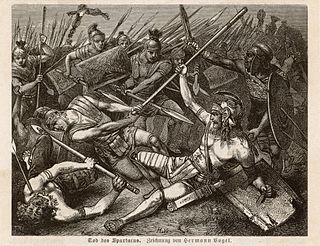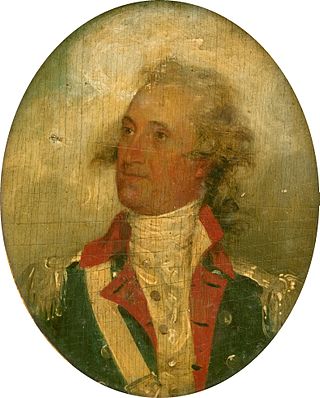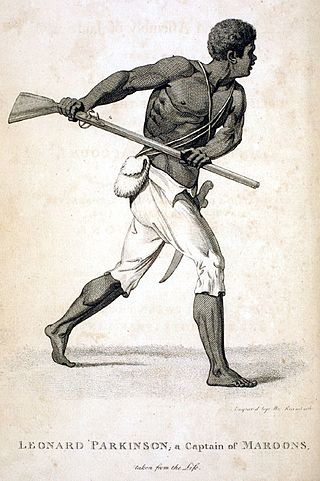
A slave rebellion is an armed uprising by slaves, as a way of fighting for their freedom. Rebellions of slaves have occurred in nearly all societies that practice slavery or have practiced slavery in the past. A desire for freedom and the dream of successful rebellion is often the greatest object of song, art, and culture amongst the enslaved population. These events, however, are often violently opposed and suppressed by slaveholders.

Thomas Pinckney was an American statesman, diplomat, and military officer who fought in both the American Revolutionary War and the War of 1812, achieving the rank of major general. He served as Governor of South Carolina and as the U.S. minister to Great Britain.

Robert Mills was an American architect and cartographer best known for designing both the first Washington Monument in Baltimore, Maryland, as well as the better known Washington Monument in Washington, D.C. He is sometimes said to be the first native-born American to be professionally trained as an architect. Charles Bulfinch of Boston perhaps has a clearer claim to this honor.
Denmark Vesey was a free Black man and community leader in Charleston, South Carolina, who was accused and convicted of planning a major slave revolt in 1822. Although the alleged plot was discovered before it could be realized, its potential scale stoked the fears of the antebellum planter class that led to increased restrictions on both enslaved and free African Americans.

James Hamilton Jr. was an American lawyer and politician. He represented South Carolina in the U.S. Congress (1822–1829) and served as its 53rd governor (1830–1832). Prior to that, Hamilton achieved widespread recognition and public approval for his actions as Intendant (mayor) of the city of Charleston, South Carolina in 1822, during the period when plans for a slave rising were revealed. As governor, he led the state during the Nullification Crisis of 1832, at the peak of his power.
Antebellum South Carolina is typically defined by historians as South Carolina during the period between the War of 1812, which ended in 1815, and the American Civil War, which began in 1861.
Gullah Jack, also known as Couter Jack and sometimes referred to as "Gullah" Jack Pritchard, was an African Methodist and Hoodoo conjurer who Paul Pritchard enslaved in Charleston, South Carolina.

Thomas Bennett Jr. was an American businessman, banker and politician, the 48th Governor of South Carolina from 1820 to 1822. A respected politician, he had served several terms in the state legislature since 1804, including four years as Speaker of the House, and a term in the state Senate.

The Old Slave Mart is a building located at 6 Chalmers Street in Charleston, South Carolina that once housed an antebellum-period slave-auction gallery. Constructed in 1859, the building is believed to be the last extant slave auction facility in South Carolina. In 1975, the Old Slave Mart was added to the National Register of Historic Places for its role in Charleston's African American history. Today, the building houses the Old Slave Mart Museum.
The South Carolina Military Academy was a predecessor, two-campus institution to The Citadel. It was established in 1842 by the South Carolina Legislature and classes began at the Arsenal (Columbia) in 1843. South Carolina had constructed a series of arsenals around the state after the Denmark Vesey planned slave revolt of 1822; these were consolidated into Columbia and Charleston arsenals. No longer seen as militarily necessary, they became in 1842 the South Carolina Military Academy, consisting of the Arsenal Academy in Columbia and the Citadel Academy in Charleston. During the Civil War students from both served as the Battalion of State Cadets; SCMA cadets were among the battalion which fired the first shots of the Civil War on January 9, 1861 while manning a gun emplacement on Morris Island, South Carolina which shelled the Union steamship Star of the West; the Battalion of State Cadets made up over a third of a Confederate force that defended a strategic rail bridge in the Battle of Tulifinny in 1864. The Arsenal Academy was burned by Union troops in 1865 and never reopened; the only surviving building became the South Carolina Governor's Mansion. The Citadel Academy and the South Carolina Military Academy closed in 1865; its buildings were in Federal hands until 1882. An 1882 act of the South Carolina Legislature reopened the South Carolina Military Academy, using only the campus in Charleston. Known commonly as The Citadel Academy, the school was renamed in 1910 as The Citadel, after the name "Academy" became common to high schools rather than colleges. The school was moved to its current location in 1922.

The South Carolina Historical Society is a private, non-profit organization founded in 1855 to preserve South Carolina's rich historical legacy. The SCHS is the state's oldest and largest private repository of books, letters, journals, maps, drawings, and photographs about South Carolina's history.

The history of Charleston, South Carolina, is one of the longest and most diverse of any community in the United States, spanning hundreds of years of physical settlement beginning in 1670. Charleston was one of leading cities in the South from the colonial era to the Civil War in the 1860s. The city grew wealthy through the export of rice and, later, sea island cotton and it was the base for many wealthy merchants and landowners. Charleston was the capital of American slavery.

Coromantee, Coromantins, Coromanti or Kormantine is an English-language term for enslaved people from the Akan ethnic group, taken from the Gold Coast region in modern-day Ghana.

The South Carolina State Arsenal in Charleston, South Carolina was built in 1829 in response to the alleged 1822 slave revolt led by Denmark Vesey. The alleged uprising never came to fruition and Vesey was publicly hanged in 1822. In 1842 the South Carolina Military Academy, a liberal arts military college, was established by the state legislature, and the school took over the arsenal the following year as one of 2 campuses, the other being the Arsenal Academy in Columbia, South Carolina. The school became known as the Citadel Academy because of the appearance of its building. From 1865 to 1881, during Reconstruction, Federal troops occupied the Citadel, and the school was closed. Classes resumed in 1882 and continued in this building until the school was relocated to a new campus on the banks of the Ashley River in 1922.

Black South Carolinians are residents of the state of South Carolina who are of African American ancestry. This article examines South Carolina's history with an emphasis on the lives, status, and contributions of African Americans. Enslaved Africans first arrived in the region in 1526, and the institution of slavery remained until the end of the Civil War in 1865. Until slavery's abolition, the free black population of South Carolina never exceeded 2%. Beginning during the Reconstruction Era, African Americans were elected to political offices in large numbers, leading to South Carolina's first majority-black government. Toward the end of the 1870s however, the Democratic Party regained power and passed laws aimed at disenfranchising African Americans, including the denial of the right to vote. Between the 1870s and 1960s, African Americans and whites lived segregated lives; people of color and whites were not allowed to attend the same schools or share public facilities. African Americans were treated as second-class citizens leading to the civil rights movement in the 1960s. In modern America, African Americans constitute 22% of the state's legislature, and in 2014, the state's first African American U.S. Senator since Reconstruction, Tim Scott, was elected. In 2015, the Confederate flag was removed from the South Carolina Statehouse after the Charleston church shooting.

American College of the Building Arts (ACBA) is a private, four-year liberal arts and sciences college located in Charleston, South Carolina, United States. It is licensed by the South Carolina Commission on Higher Education to grant a Bachelor of Applied Science and an Associate of Applied Science in six craft specializations in the building arts.

Emanuel African Methodist Episcopal Church, colloquially Mother Emanuel, is a church in Charleston, South Carolina, founded in 1817. It is the oldest AME church in the Southern United States; founded the previous year in Philadelphia, Pennsylvania, AME was the first independent black denomination in the nation. Mother Emanuel has one of the oldest black congregations south of Baltimore.

The Arsenal Academy was a military academy in Columbia, South Carolina, originally established in 1842 as an independent school by the state of South Carolina. In 1845, the academy became a component of the South Carolina Military Academy, in which first year cadets underwent their initial year of training before completing their studies at the larger Citadel Academy in Charleston, South Carolina. The school was burned by Sherman's forces in 1865 and never reopened.
The Denmark Vesey Monument is a monumental statue in Charleston, South Carolina, United States. The monument was erected in 2014 in Hampton Park and honors Denmark Vesey, a freedman who lived in Charleston and was executed in 1822 for plotting a slave revolt. It was designed by American sculptor Ed Dwight.

The Charleston Workhouse Slave Rebellion was a rebellion of enslaved South Carolinians that took place in Charleston, South Carolina, in July 1849. On July 13, 1849, an enslaved man named Nicholas Kelly led an insurrection, wounding several guards with improvised weapons and liberating 37 enslaved people. Most were quickly captured, and Nicholas and two others were tried and hanged.




















